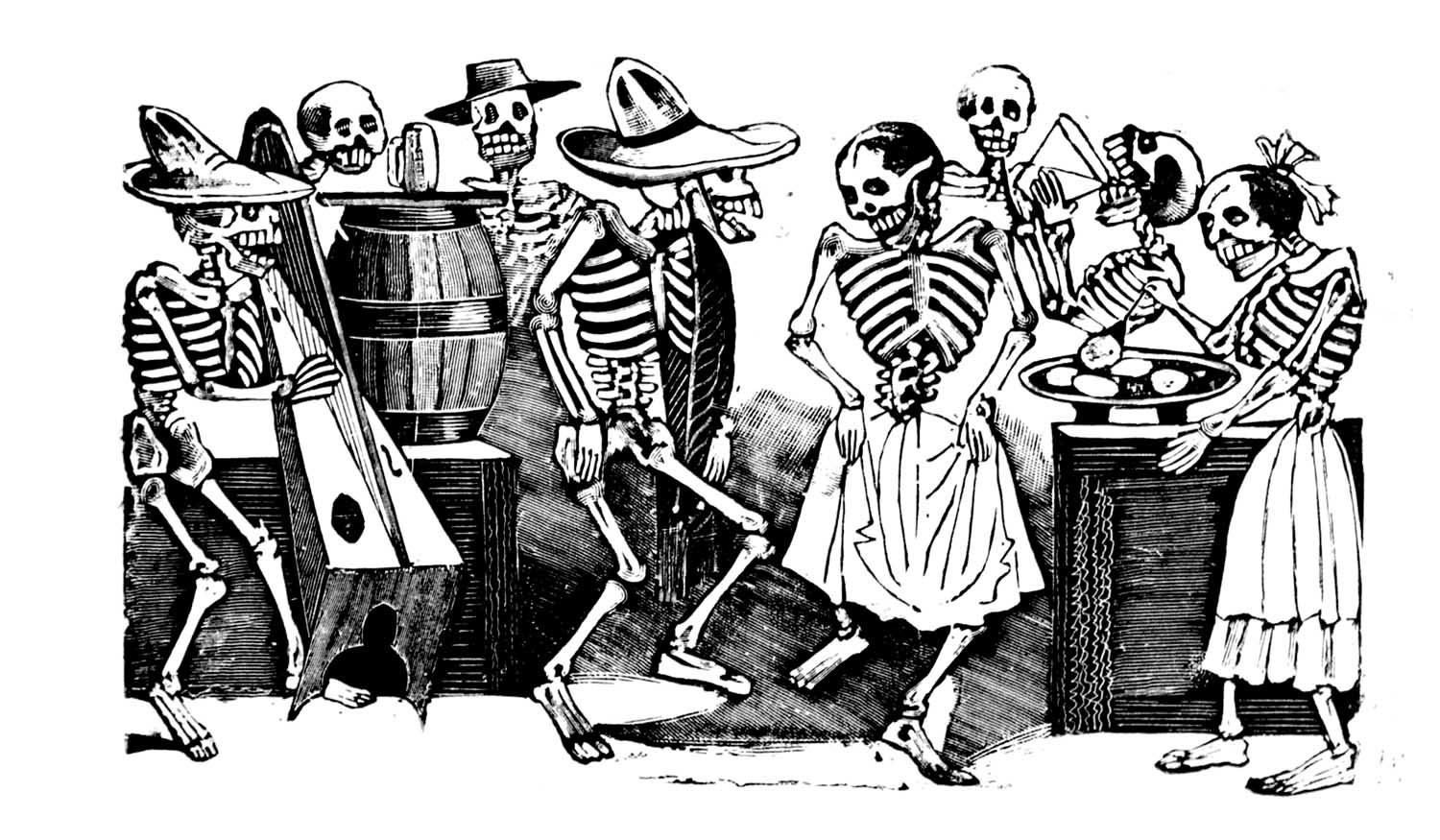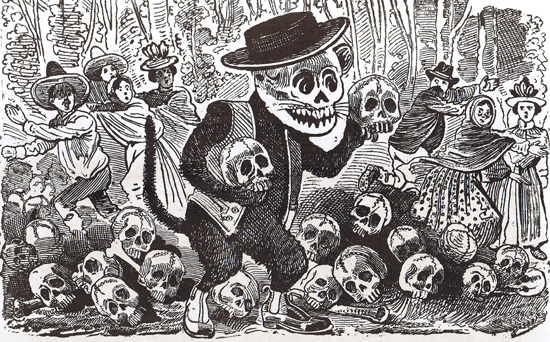Día de Muertos celebrations have existed in the Americas for centuries, originating in pre-Hispanic communities. But it wasn’t until the turn of the century that the iconic calavera images that symbolize the holiday today became popular. We have one man to thank for that: the famed printmaker and engraver José Guadalupe Posada.
Born in 1852 in Aguascalientes, Mexico, Posada learned lithography and engraving, and began his career as a political cartoonist at a local newspaper while he was still a teenager. According to historian Jim Tuck, the newspaper folded after only 11 issues, reputedly because one of Posada’s illustrations had offended a powerful local politician. This would be the beginning of Posada’s prominent career as a political satirist as well as his encounters with political repression.

After stints running a print shop that created advertising work, posters, book illustrations and more, Posada eventually moved to Mexico City where he worked as an illustrator for hire. His work reflected the social realities of pre-Revolutionary Mexico, and brought an anti-establishment message to the masses who suffered under Porfirio Diaz’s dictatorship. In particular, Posada became famous for lampooning the rich bourgeois class, using using skeletons and skulls to depict them – which were metaphors for the corruption in upper class society. Perhaps one of the best-known examples of this work was la Calavera de Catrina, an illustration of a high-society woman.
During his life, Posada served as a voice for the poor and working classes, and helped solidify illustration and printmaking as a means to voice political concerns. Following his death, however, his work helped fuel an entire artistic movement, influencing famed artists like Diego Rivera and José Clemente Orozco.

Perhaps his most enduring legacy, is creating the whimsical skull and skeleton imagery that would later become so representative of Día de Muertos. Today, the masks and face painting you’ll see during these celebrations are heavily influenced by Posada’s illustrations. You can also see the influence of his work in Pixar’s box office smash Coco, which drew heavily from his work to influence the film’s aesthetic.







